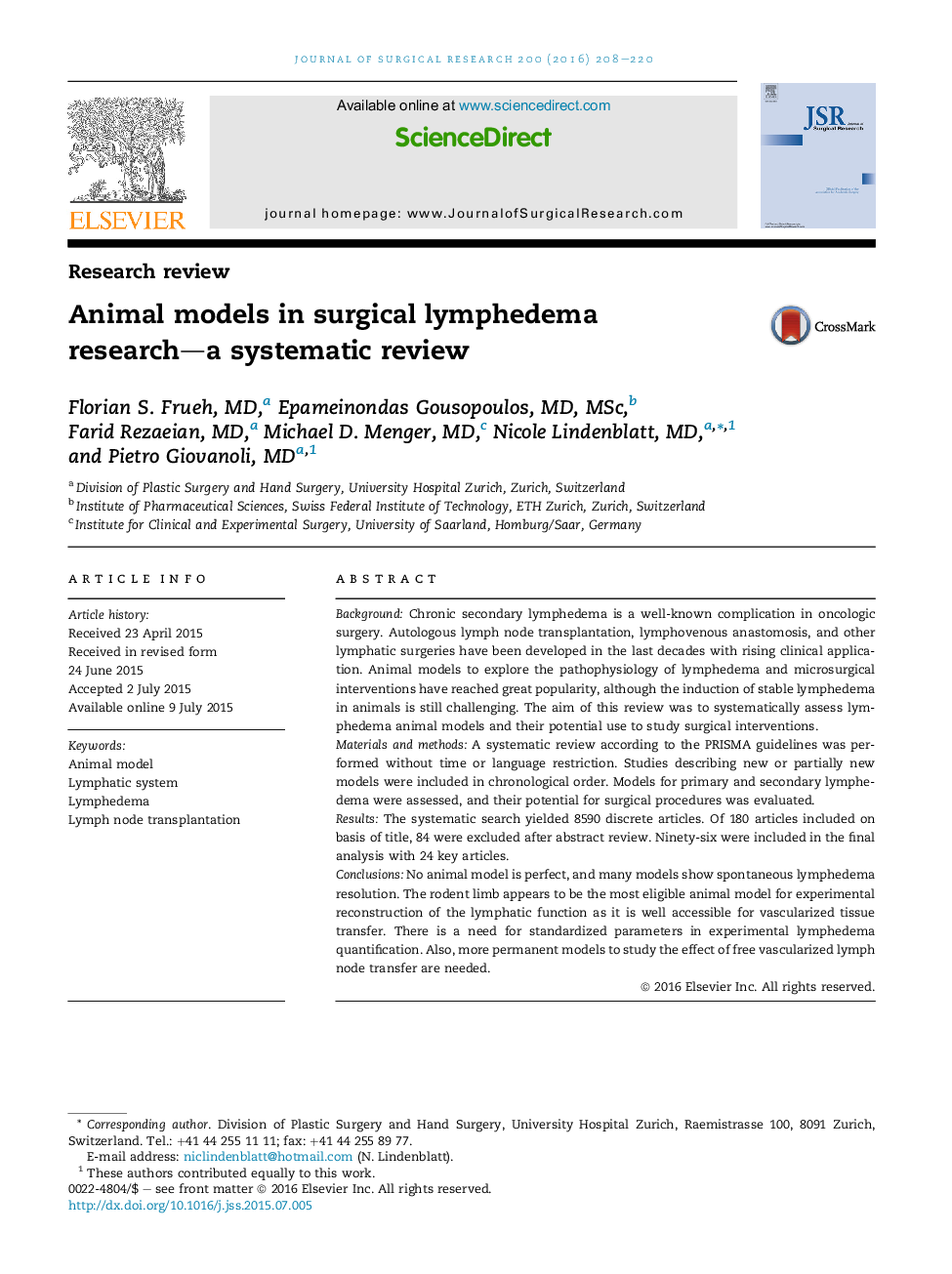| Article ID | Journal | Published Year | Pages | File Type |
|---|---|---|---|---|
| 4299513 | Journal of Surgical Research | 2016 | 13 Pages |
BackgroundChronic secondary lymphedema is a well-known complication in oncologic surgery. Autologous lymph node transplantation, lymphovenous anastomosis, and other lymphatic surgeries have been developed in the last decades with rising clinical application. Animal models to explore the pathophysiology of lymphedema and microsurgical interventions have reached great popularity, although the induction of stable lymphedema in animals is still challenging. The aim of this review was to systematically assess lymphedema animal models and their potential use to study surgical interventions.Materials and methodsA systematic review according to the PRISMA guidelines was performed without time or language restriction. Studies describing new or partially new models were included in chronological order. Models for primary and secondary lymphedema were assessed, and their potential for surgical procedures was evaluated.ResultsThe systematic search yielded 8590 discrete articles. Of 180 articles included on basis of title, 84 were excluded after abstract review. Ninety-six were included in the final analysis with 24 key articles.ConclusionsNo animal model is perfect, and many models show spontaneous lymphedema resolution. The rodent limb appears to be the most eligible animal model for experimental reconstruction of the lymphatic function as it is well accessible for vascularized tissue transfer. There is a need for standardized parameters in experimental lymphedema quantification. Also, more permanent models to study the effect of free vascularized lymph node transfer are needed.
